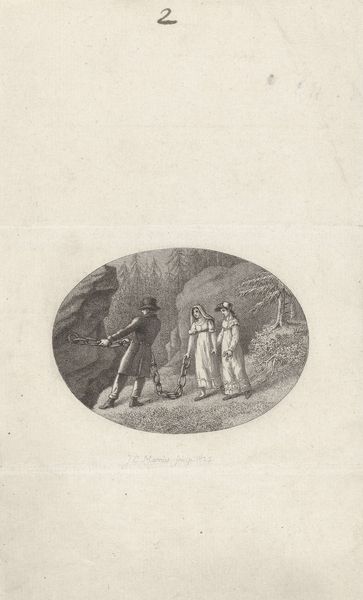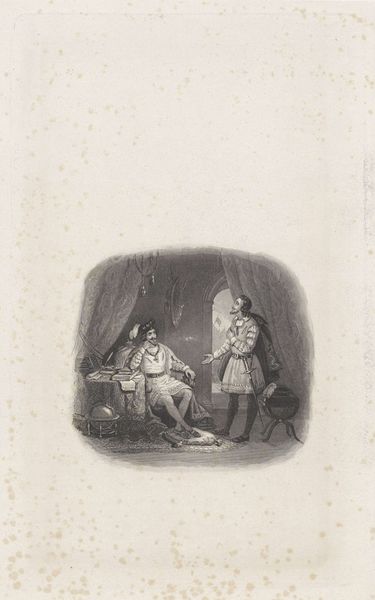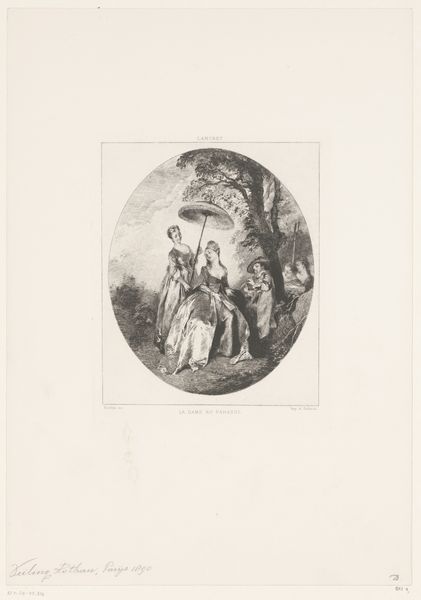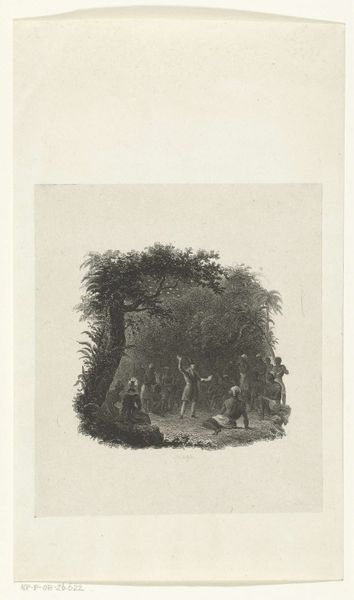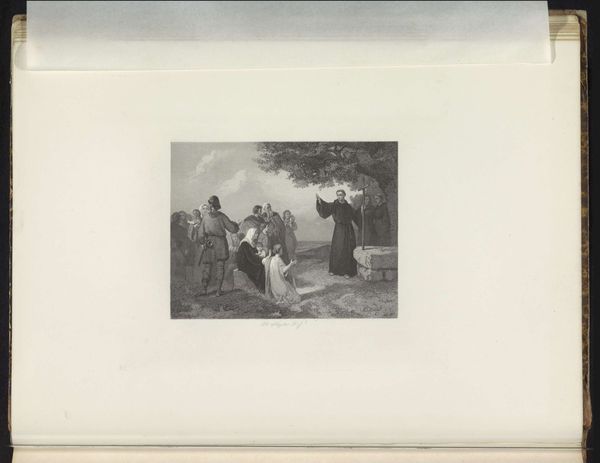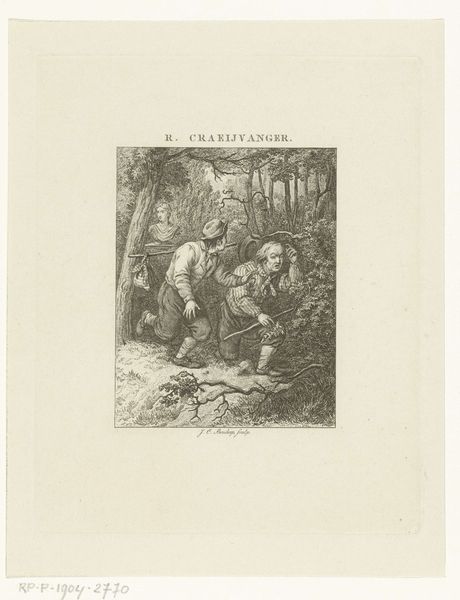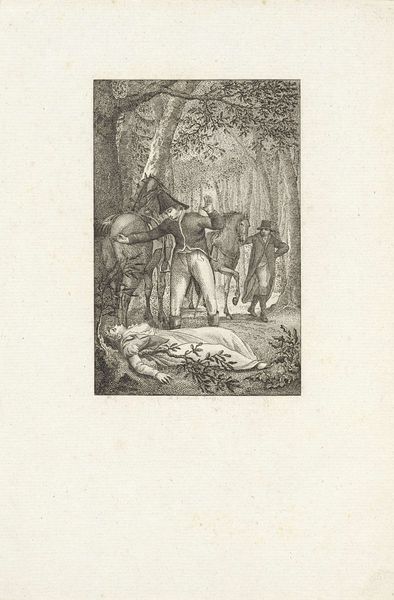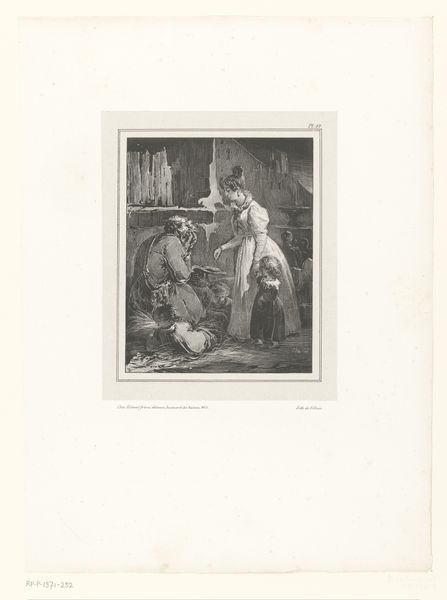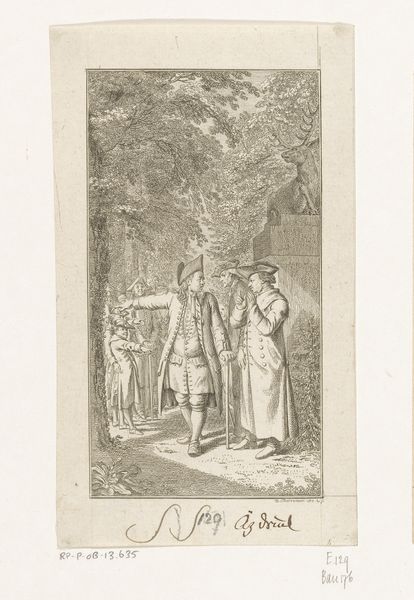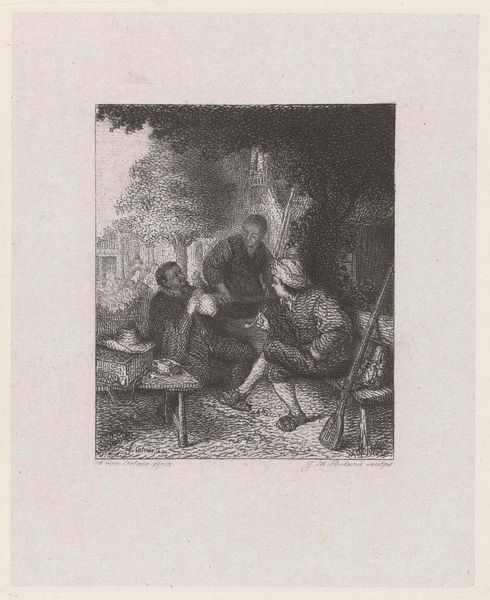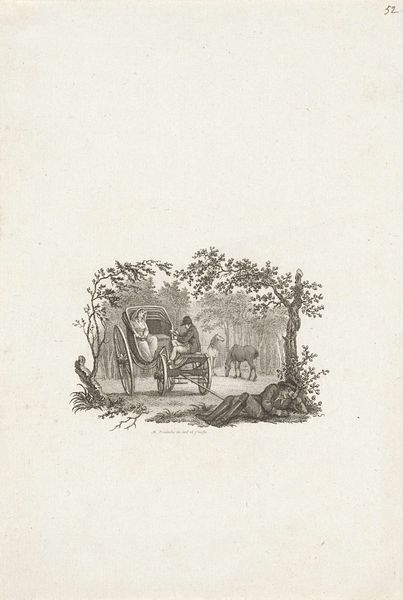
print, engraving
# print
#
figuration
#
romanticism
#
genre-painting
#
history-painting
#
engraving
Dimensions: height 240 mm, width 148 mm
Copyright: Rijks Museum: Open Domain
Henricus Wilhelmus Couwenberg made this print, "Two soldiers in the hut of an alchemist," in the Netherlands sometime in the first half of the 19th century. It depicts a scene of two soldiers visiting what appears to be an alchemist in a shack. The print creates meaning through its visual codes, referencing the cultural fascination with alchemy, a medieval pseudoscience aiming to turn base metals into gold or discover a universal elixir. The presence of soldiers suggests themes of patronage, protection, or perhaps even exploitation, subtly commenting on the social structures of the time. The shack setting with its odd decor challenges the grandiosity that we might otherwise expect from a scene involving alchemy. Historical research into 19th-century Dutch society, along with the history of alchemy, can provide deeper insights into the artwork's significance, revealing its complex commentary on the social and institutional contexts of its time. Ultimately, art like this reminds us that its meaning is contingent on these contexts, and the role of the historian is to illuminate them.
Comments
No comments
Be the first to comment and join the conversation on the ultimate creative platform.
